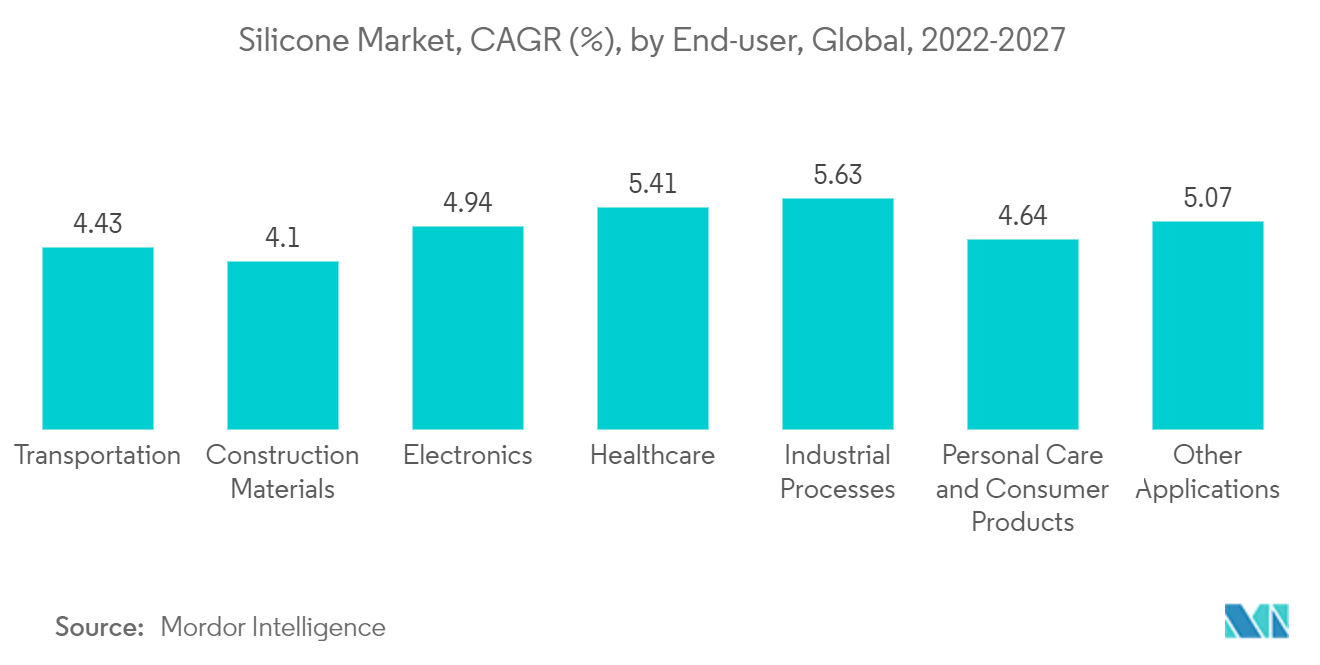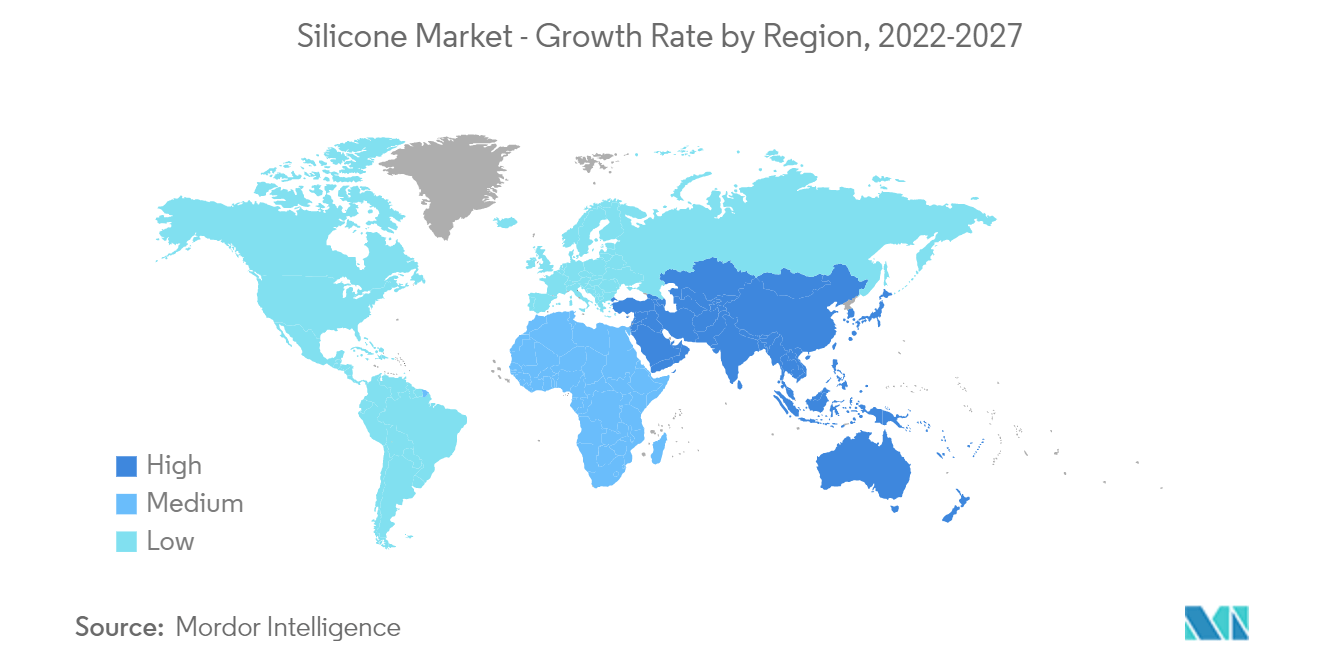Market Trends of Silicone Industry
This section covers the major market trends shaping the Silicone Market according to our research experts:
Increasing Usage in Industrial Processes
- Industrial anti-foaming agents, industrial coatings, hydraulic fluids and lubricants, RTV (Room-Temperature-Vulcanizing) sealants, molds, and additives for polymers represent the key application of silicones in the industrial processes sector.
- In the oil and gas industry, silicones are widely used in offshore drilling, where managing foam and waste is essential because of space and weight constraints. Silicones enable gas trapped in the drilling mud to get released. Anti-foaming agents reduce the use of energy and chemicals while increasing production rates, as the presence of foam slows down the process and requires time for maintenance operations.
- Silicone also finds its major application in industrial coatings like anti-corrosion, chemical-resistant, and heat-resistant coatings used on bridges and tunnels. They also include coatings on structures used in oil and gas (including refineries), power, and other industries (including mining, waste treatment, and pulp and paper).
- Thus, expanding the global oil and gas industry is anticipated to benefit from the demand for silicone. Various expansion projects underway are expected to drive the growth. For instance, PetroChina, a state-controlled refinery company, is planning to start its 400,000 barrels per day Jieyang refinery in South China's Guangdong province by the first half of 2022. India is a major economy in the Asia-Pacific region in the oil and gas segment. According to India Brand Equity Foundation (IBEF), the oil demand in India is projected to reach 11 million barrels by the year 2045. Furthermore, natural gas consumption in India is expected to grow by 25 billion cu. m. by the year 2024.
- The number of offshore drilling rigs globally has risen at a gradual rate over the years, and this, along with the new contract awards and the increase in production activities from Europe, Africa, and the United States, has led to an increase in the demand for offshore exploration equipment, in turn supporting the growth of the water treatment chemicals including silicone-based anti-foaming agents' market in the recent past.
- Due to all the above factors, the market is expected to witness strong post-recovery growth during the forecast period.

Asia-Pacific Region is Expected to Dominate the Market
- Asia-Pacific is the major consumer of silicone, accounting for the largest share. The growing market in China, India, and Japan has been one of the prominent reasons for the growth of the Asia-Pacific silicone market over the years.
- Semiconductors form a major part of the electronics segment, which involves the usage of silicones as silicone encapsulates, coat, and adhere to and protect semiconductors, PCBs, and ECUs , and others. According to the Semiconductor Industry Association, the semiconductor sales value in China stood at USD 182.93 billion in 2021, compared to USD 150.4 billion in 2020, thereby, increased the demand for studied market.
- With a coastline of over 14,000 km and several large ports, China is one of the world's largest maritime countries. The country has several large shipbuilding conglomerates: China State Shipbuilding Corporation (CSSC), China Shipbuilding Industry Corporation (CSIC), Sinotrans, COSCO shipping, and CMHI are a few major names in the country's shipbuilding industry. The Chinese shipyards build a variety of ships, such as bulk carriers, container ships, oil tankers, naval vessels, passenger vessels, luxury vessels, and others, thereby creating demand for silicone.
- Moreover, China has the world's largest electronics production base. According to ZVEI Dia Elektroindustrie, China's electronics industry was valued at about USD 2,430 million in 2020, and it is forecasted to register 11% and 8% Y-o-Y in 2021 and 2022, thus providing a huge market for silicone.
- Also, acccording to India Brand Equity Foundation (IBEF), India's demand for semiconductor goods will reach USD 400 billion by FY2025. With India estimated to receive INR 76,000 crore as investments in the semiconductor sector under the Production Linked Incentive (PLI) scheme, the Uttar Pradesh government is also aiming to emerge as a semiconductor hub in the country.
- The total production value of the electronics industry in Japan was around JPY 9.96 trillion in 2020, which was 96.6% of the production value compared to the last year. However, the electronics industry production till August 2021 increased to JPY 7.193 trillion, which was 113.4% of the first eight months' value in 2020, thereby increasing the consumption of silicone in the region.
- Furthermore, the Asia-Pacific region is the largest automotive manufacturing hub, registering almost 60% production share of the world. According to OICA, in the first nine months of 2021, the total production of vehicles stood at 32.67 million units, an increase of 11% compared to the same period last year.
- The factors mentioned above may contribute to the increasing demand in the silicone market in the region during the forecast period.


